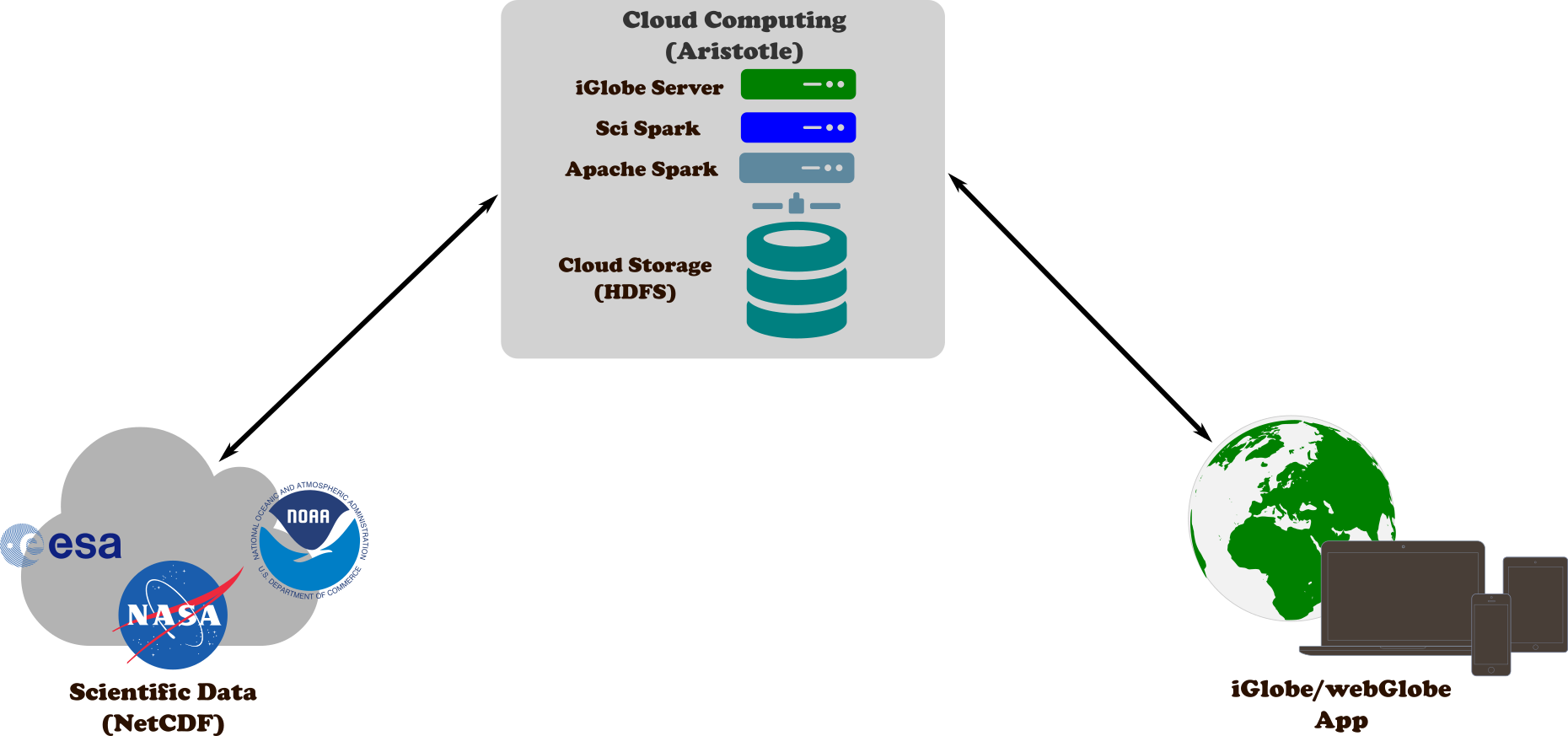NASA Web World Wind (and its predecessor, World Wind JAVA), holds immense promise for climate and weather researchers.

The webGlobe project combines the rich capabilities of Web World Wind with the NetCDF data access capabilities of iGlobe. Just like Web World Wind, webGlobe runs on all major operating systems, desktop and mobile devices, and web browsers. The video below demonstrates how webGlobe allows access and visualization of remotely available NetCDF data. However, the key capability of webGlobe is under the hood. To allow visualization and analysis of a wide variety of geospatial data sets, webGlobe has a decoupled client-server architecture (See Figure above).
| webGlobe harnesses the computing power and flexibility of the cloud in a unique way to allow researchers, policymakers, and the general public to interact with big climate and weather data on their browser. |
Features - Server Side Support
While one of primary objectives of webGlobe (shown above) is to access remote NetCDF data. In future, more capabilities such as interactive analysis, subsetting, etc., available in iGlobe, will be integrated into the webGlobe tool. However, the key capability demonstrated here is the cloud based server architecture. Powered by Amazon Web Services (AWS), the server consists of webGlobe server (deployed on an AWS-EC2 instance) and a low-cost scalable storage system (AWS-S3).
To allow portability across a variety of devices, the visualization logic is decoupled into two parts. The server component is responsible for fetching the data from remote locations and converting into renderable images for the client app to ingest. The images are stored in the low-cost AWS S3 storage server and then provided to the app. The S3 storage serves as a cache for future accesses to the same data set.
The cloud based decoupled architecture will serve as the blueprint for the future capabilities of webGlobe include analytics, support for other data formats, etc.
Screenshot
